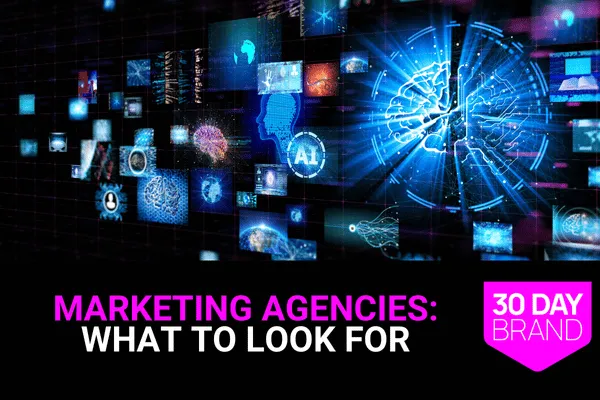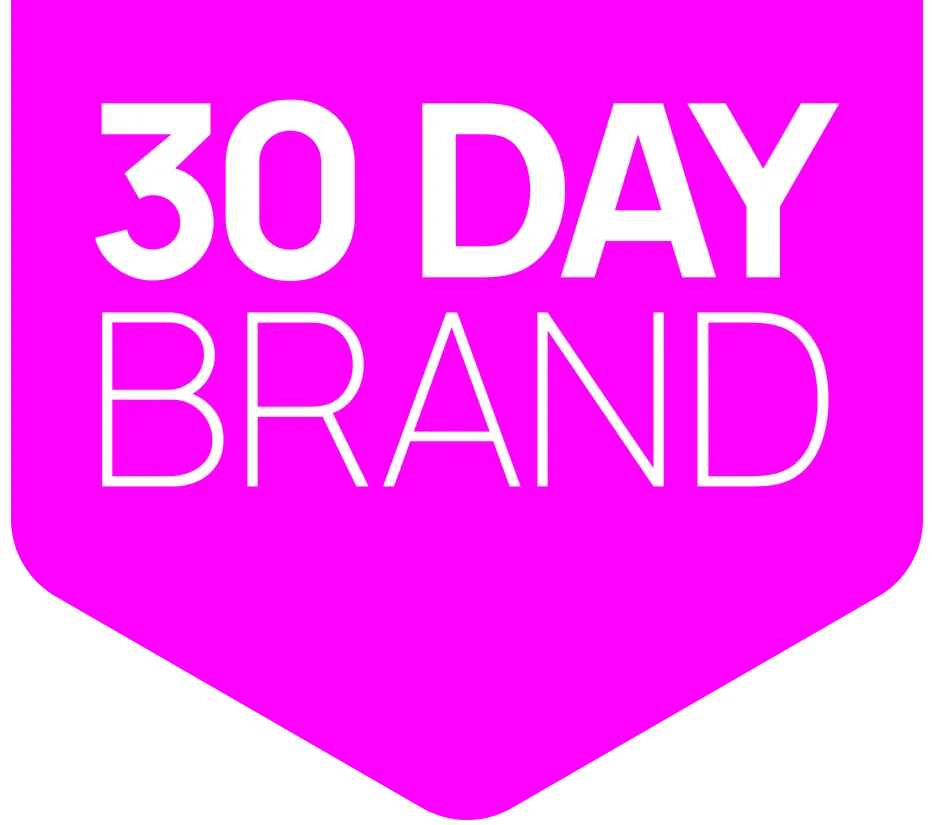
Marketing Agencies: Selection, Services, and Results Data
Why Marketing Agencies Matter for Growth
For many small businesses and founder-led B2B firms, growth stalls because marketing is inconsistent or handled ad hoc. Ads are launched without strategy. Websites don’t convert. Teams waste hours managing campaigns they don’t fully understand.
That’s why companies turn to agencies. A marketing agency is a firm that plans, executes, and manages campaigns across channels like SEO, paid ads, content, and branding to help businesses generate leads and revenue.
They’re in demand because 74% of agencies report year-over-year revenue growth (Agency Analytics, 2023). Businesses that hire them get structured systems, advanced tools, and expert execution.
👉 Before you hire, make sure your business messaging framework is clear. Even the best agency can’t fix unclear positioning.
👉 Related: Marketing Agencies Near Me
What Do Marketing Agencies Actually Do?
Agencies offer a wide range of services. Not every firm needs them all, but here’s what’s typically included:
SEO & Content Marketing: Long-term visibility through optimized content and technical SEO. (See Digital Agency Marketing Models).
Paid Advertising (Google, Meta, LinkedIn): Campaigns to drive immediate leads.
Branding & Creative Design: Consistent identity and messaging across touchpoints.
Web Development & CRO: Landing pages, funnels, and conversion optimization.
Email Marketing & Automation: Sequences that nurture leads into customers.
Analytics & Reporting: Dashboards and KPIs to prove ROI.
Case study: A B2B SaaS startup hired a full-service agency to unify SEO, ads, and funnel optimization. Within 6 months, they grew qualified leads by 38% and cut cost-per-lead by 22%.
Marketing Agency Best Practices: 10 Key Factors
Hiring the wrong agency wastes money. The right one accelerates growth.
1. Define Goals Before Hiring
Why it matters: Agencies can’t succeed if clients don’t know what they want. Firms with defined goals see 30% higher ROI (Forrester, 2023).
How to implement:
Decide if you want leads, sales, or awareness.
Translate into KPIs like CPL, ROI, or conversion rate.
Set timeframes (e.g., 90-day targets).
Share written goals with potential agencies.
Case study: A local consulting firm hired an agency without clear KPIs. After 6 months, they had reports full of data—but no sales increase. Once they set a goal of “book 50 qualified calls per quarter,” ROI became measurable.
Time required: 1–2 weeks.
2. Know the Types of Agencies (Full-Service vs Niche)
Why it matters: The wrong type of agency may lack the depth or breadth you need.
Types:
Full-Service Agencies: Cover SEO, PPC, content, design, and branding under one roof. Best for businesses seeking integrated campaigns.
Niche Agencies: Specialize in one service, like paid ads or SEO. Ideal if you already have internal staff covering other areas.
How to implement:
Assess whether you need one channel (niche) or cross-channel integration (full-service).
Ask agencies for channel-specific case studies.
If hiring full-service, ask how they coordinate cross-channel messaging.
Case study: A founder-led B2B firm worked with a niche PPC agency. They generated leads but no conversions because the website wasn’t optimized. Switching to a full-service agency that included CRO doubled conversions in 90 days.
Time required: 1 week research.
3. Evaluate Industry Experience
Why it matters: Agencies with relevant experience shorten ramp-up time and avoid compliance mistakes.
How to implement:
Ask for case studies in your industry.
Request references from clients like you.
Check team bios for relevant expertise.
Look at how they solved industry-specific challenges.
Result: Industry-savvy agencies generate ROI faster because they already understand audience pain points.
Time required: 1–2 weeks vetting.
4. Review Case Studies and Testimonials
Why it matters: Any agency can talk big. Case studies prove results.
How to implement:
Request before-and-after data (leads, conversions, ROI).
Contact references to validate testimonials.
Look for third-party reviews (Clutch, G2).
See if they include challenges, solutions, and results.
Result: Agencies with case studies are 2× more likely to win long-term contracts (Predictable Profits, 2025).
Case study: A service company reviewing proposals saw one agency list “helped client grow revenue.” Another agency showed “increased SQLs by 41% and reduced CAC by 18% in 4 months.” They chose the second.
Time required: 1–2 weeks.
5. Clarify Pricing Models (Retainer, Project, Performance)
Why it matters: Misaligned pricing causes frustration. Agencies typically use three models:
Retainer: Ongoing monthly fee for consistent services (common for SEO, ads, and content).
Project-based: One-off pricing for specific deliverables, like a website redesign.
Performance-based: Fees tied to KPIs such as cost per lead or revenue generated.
How to implement:
Ask agencies which model they use and why.
Request full breakdowns (services, ad spend, tech fees).
Compare proposals side by side with a business messaging framework to ensure they’ll market your differentiation.
Result: Clear pricing prevents scope creep and improves budget predictability.
Time required: 1 week of review.
6. Check Technology and Tools
Why it matters: Agencies with the right stack deliver faster results and better reporting.
How to implement:
Ask about their CRM (HubSpot, Salesforce).
Confirm analytics tools (GA4, dashboards).
Ensure integration with your systems.
Request sample reports.
Result: Agencies with advanced tools deliver 30% faster reporting accuracy (Agency Analytics, 2023).
Time required: 1 week.
Case study: A service firm hired two agencies over 2 years. The first used spreadsheets. The second integrated HubSpot + LinkedIn automation. Reporting accuracy and ROI visibility improved immediately.
7. Align Agency with Your Brand Messaging
Why it matters: Misaligned messaging weakens trust and confuses prospects.
How to implement:
Share your business messaging framework with them before kickoff.
Ask how they adapt content to your ICP.
Review previous campaigns for tone consistency.
Result: Brand-aligned campaigns see 20%+ higher engagement (Forrester, 2023).
Time required: 1–2 weeks.
8. Confirm Reporting and Analytics
Why it matters: Transparent reporting is the only way to prove ROI.
How to implement:
Request sample dashboards and frequency of updates.
Define KPIs upfront (SQLs, CPL, CAC, ROAS).
Ensure you own the data.
Result: Companies tracking agency ROI achieve 60% higher client retention (Salesforce, 2024).
Time required: 1 week setup.
9. Test Communication and Responsiveness
Why it matters: Many agencies lose clients not on results—but on poor communication.
How to implement:
Evaluate how fast they reply during sales.
Confirm a dedicated account manager.
Set SLAs (e.g., response within 24 hours).
Schedule regular pipeline check-ins.
Result: High-communication agencies retain 90%+ of clients annually (Predictable Profits, 2025).
Time required: 2–3 weeks.
10. Start with a Pilot Project
Why it matters: Pilots validate agency fit without long contracts.
How to implement:
Choose one service (SEO, PPC, email).
Define KPIs before launch.
Track performance over 2–3 months.
Expand if goals are met.
Case study: A B2B firm ran a 90-day LinkedIn + email pilot. The agency delivered 42 SQLs at $210 each. With proof of ROI, the firm signed a 12-month retainer.
Result: Pilots reduce risk and speed decision-making.
Time required: 4–6 weeks.
👉 Related: Advertising Firm Near Me
Marketing Agency Implementation Guide
Step 1: Audit Current Marketing Gaps
Use tools like Google Analytics and CRM reports to identify where campaigns fail.
Result: Clear visibility into what needs outsourcing.
Step 2: Create a Shortlist of Agencies
Research 3–5 firms on directories (Clutch, LinkedIn, referrals).
Result: Focused list of qualified candidates.
Step 3: Evaluate Proposals and Pitches
Compare pricing models, case studies, KPIs, and reporting systems.
Result: Transparent side-by-side evaluation.
Step 4: Sign Agreement and Onboard Agency
Finalize contracts, share assets, and align goals.
Result: Agency ready to launch campaigns.
Step 5: Track KPIs Monthly
Measure SQLs, CPL, CAC, and ROI. Use dashboards to ensure accountability.
Result: Confidence that budget is driving growth.
Metrics & Measurement for Marketing Agencies
Numbers prove whether an agency is delivering ROI:
74% of agencies report year-over-year revenue growth (Agency Analytics, 2023).
49% of agencies grew revenue by ≥25% in the last year (Agency Analytics, 2023).
High-performing agencies retain 90%+ of clients annually (Predictable Profits, 2025).
Companies that track agency ROI see 60% higher retention (Salesforce, 2024).
Agencies with advanced tools deliver 30% faster reporting accuracy (Agency Analytics, 2023).
Case study: A mid-size consulting firm partnered with a full-service agency. By tracking CPL and SQLs monthly, they improved ROI visibility and grew sales pipeline revenue by 32% within 6 months.
FAQ: Marketing Agencies
What is a marketing agency?
A marketing agency is a professional firm that manages campaigns—SEO, paid ads, content, branding, and more—to help businesses grow leads and revenue. They bring tools and expertise that small teams often lack.
How much do marketing agencies charge?
Retainers: $3k–$15k/month
Projects: $5k–$20k+
Performance-based: variable, tied to leads or sales
What’s the difference between full-service and niche agencies?
Full-service agencies manage all channels in an integrated way.
Niche agencies specialize in one area (SEO, PPC, content).
Should I hire an agency, freelancer, or employee?
Freelancer: Lowest cost, narrow expertise, less scale.
Employee: Full-time execution, but limited tools and perspective.
Agency: Team with systems, technology, and scalability. Many SMBs use freelancers early, then upgrade to agencies for scale.
How do agencies measure success?
By KPIs like CPL, SQLs, ROI, ROAS, and client acquisition cost (CAC).
What’s the average contract length?
6–12 months for retainers; 2–3 months for pilots.
How do I know if an agency is a good fit?
Look for case studies in your industry, transparent pricing, clear reporting, and strong communication during the sales process.
Can agencies guarantee results?
No ethical agency guarantees revenue. They should commit to defined KPIs and transparent reporting.
What KPIs should I track with an agency?
Cost per lead, sales-qualified leads, CAC, ROAS, and overall ROI.
How do I switch agencies without losing momentum?
Request a full handover of campaigns, ad accounts, and analytics. Overlap onboarding of the new agency to prevent downtime.
Let’s Scale With the Right Partner: Next Steps
Hiring an agency is a growth decision, not just an expense. The wrong partner wastes money; the right one becomes your growth engine.
Run your free Brand Message Analyzer to align your messaging before hiring a marketing agency.
👉 Related: Brand Ambassadors










